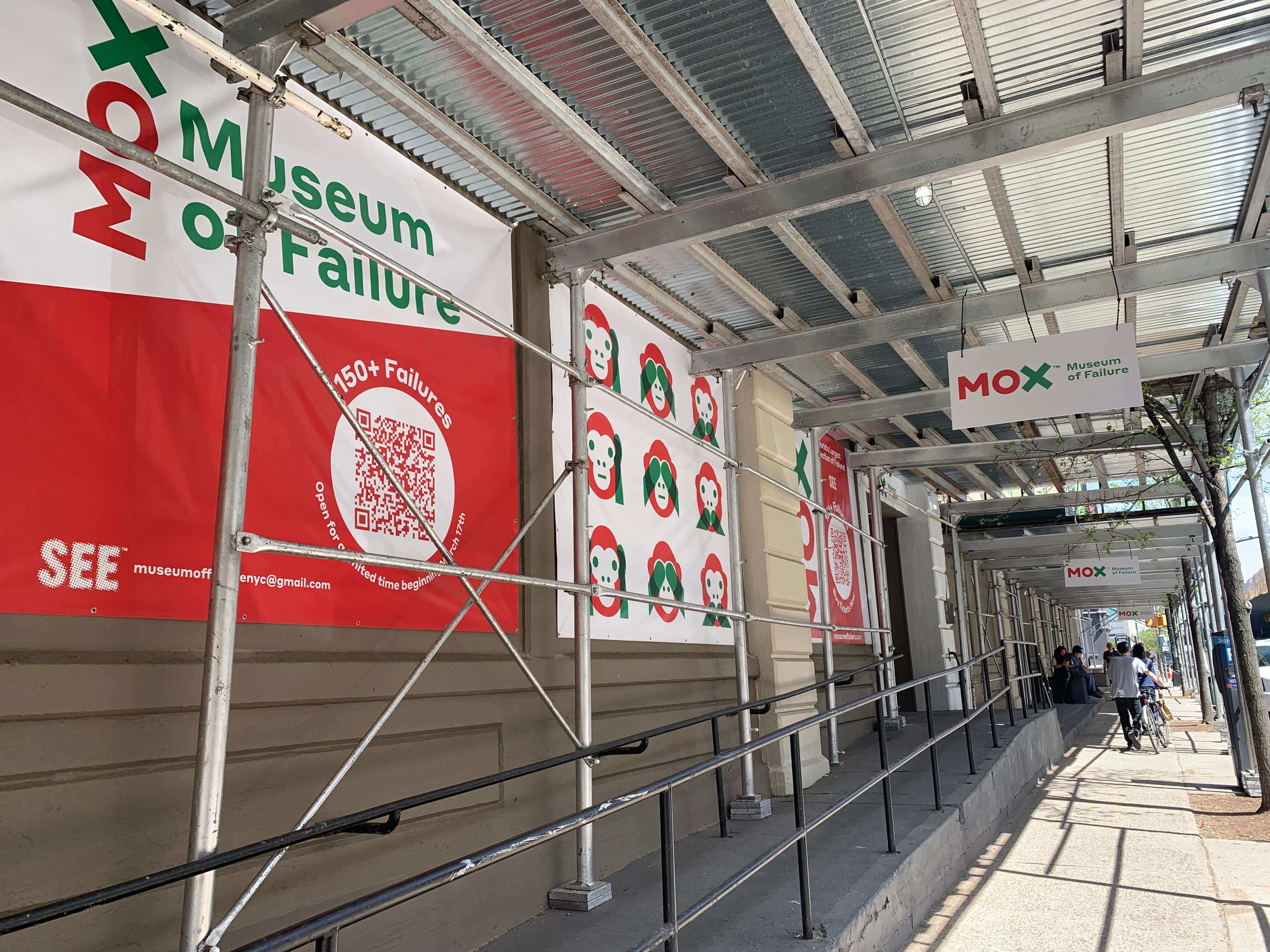Have you ever done something so bad that you may have regretted it and wished people would forget it and never mention it again? Well, imagine your biggest flops and failures on display for all the world to see, literally.
The Museum of Failure—a collection of more than 150 failed inventions, products, and services from the U.S., Europe, and China—has found its temporary home in one of the most creative hubs in Brooklyn: Industry City. Its goals are to stimulate productive discussion about failure and inspire visitors to take meaningful risks in life, according to Dr. Samuel West, founder and curator of the traveling exhibition.
“I fell into this swamp of failure because it became so apparent that failure is one of the absolutely biggest obstacles to innovation for organizations … but I think it’s equally applicable for us as individuals as well,” said West, a licensed clinical psychologist who specializes in organizational science. “I had already written research articles and had done a bunch of talks, but I was looking for an exciting and interesting way to communicate these ideas.”
As revealed on WNYC’s “All Of It with Alison Stewart,” West was on a family vacation in Croatia in 2016 when he discovered the Museum of Broken Relationships, which displayed donated items that represented people’s failed relationships. A light bulb went off above his head and he was inspired to apply the same logic to physical commercial failures and the like. After scouring online marketplaces including Craigslist, eBay, and their international equivalents for some of the most recognizable—and unrecognizable—failures in a wide variety of categories (e.g. technology, children’s toys, medicine, and food and drink), West launched the Museum of Failure in Sweden a year later. Some notable examples include the Atari ET game and console (1982-1983), Trump Ice water and steaks (2004 and 2007 respectively), FoxTrax (the glowing hockey puck used for NHL TV broadcasts between 1996 and 1998), Lululemon yoga pants (2013), odd-flavored Oreos, Harley-Davidson cologne (1996-2005), grass skis (1966), and Pepsi Crystal (1992-1993).
Foldable Spoon
Once the exhibition visited countries around the world and made headlines, West began receiving donations to add to his unusual collection. For instance, the NuSpoon, a foldable paper spoon that was ultimately not user-friendly circa 2015, was donated to West by inventor Matthew Brooks and is now on display. “That’s probably the most fun part of the museum for me,” West remarked when reminiscing on his growing collection, which has now amassed more than 200 items.
Also on display is the 1987 Trabant 601 S, an East German car that was generously donated by Country Classic Cars in Staunton, Illinois, which has never been shown at previous tour stops. “It was an iconic car from Soviet Bloc East Germany, a horrible piece of sh*t car in every possible way, but it was still a bestseller … because there were no other cars to buy [at the time],” he explained. “So, we have it in the museum as a defiance of failure. In any other context, it would be an absolute flop, but because there was no other competition for cars, it was a bestseller.”
So how does a product become part of the museum? West broke down the criteria for the RHSR: 1.) if it’s a consumer product (like many of the items currently on display), the item failed commercially by not generating any profits and becoming discontinued; 2.) the product was innovative, but deviated from its desired outcome; and 3.) it has to be interesting to West, which is completely subjective.
One of West’s personal favorites that is on display, for instance, is Kodak’s digital camera. Though the everyday visitor might not consider the technology an “exciting item per se,” West finds its backstory both complex and interesting. “Kodak was innovative technology-wise, but wasn’t so innovative in its business model because they insisted on making their money from printing photos. They didn’t understand the current trends or, if they understood it, they refused to change and they died instantly,” West said. “Kodak was the Google of yesteryear. They were the best at everything and, yet, they still failed.”
With more than 150 items on display, West believes there is something for everybody that will pique their interest. “When the Museum of Failure first opened in the States [Los Angeles in December 2017], it was a crazy success. But I think, in some weird way, the Brooklyn exhibition might actually beat that,” West said. “The weekends are packed, and I think New Yorkers have that dark, cynical sense of humor, which just fits perfectly with the Museum of Failure.”
West added: “I want people to understand and appreciate that failure is necessary for any kind of success and progress—whether it’s biological evolution, technology, relationships, or any aspect of life. If you’re not exploring and experimenting, or thinking about or talking about our own failures because it feels uncomfortable, then you’re not learning from those failures and making any progress. Lastly, visitors of the museum have taught me that they feel liberated when they see these multinational, rich, competent companies fail when they try new things. They say it feels like they can take some kind of risks as well as individuals.”
Due to its immense popularity, the Museum of Failure has extended its run in Sunset Park (800 Third Avenue) until June 18 before moving onto its next location, which is still under wraps for now. Visit museumoffailure.com for more information and to buy tickets. And if you have a suggestion of a failed product or an actual failed product that should be on display, the museum would love to hear from you. Contact info@museumoffailure.com.











One Comment
Pingback: Commercial Flops, Fiascos, Mishaps, Oh My! Pop-up Museum of Failure is All the Hype in Industry City by Erin DeGregorio – Red Hook Star-Revue – UK Poperty Guides